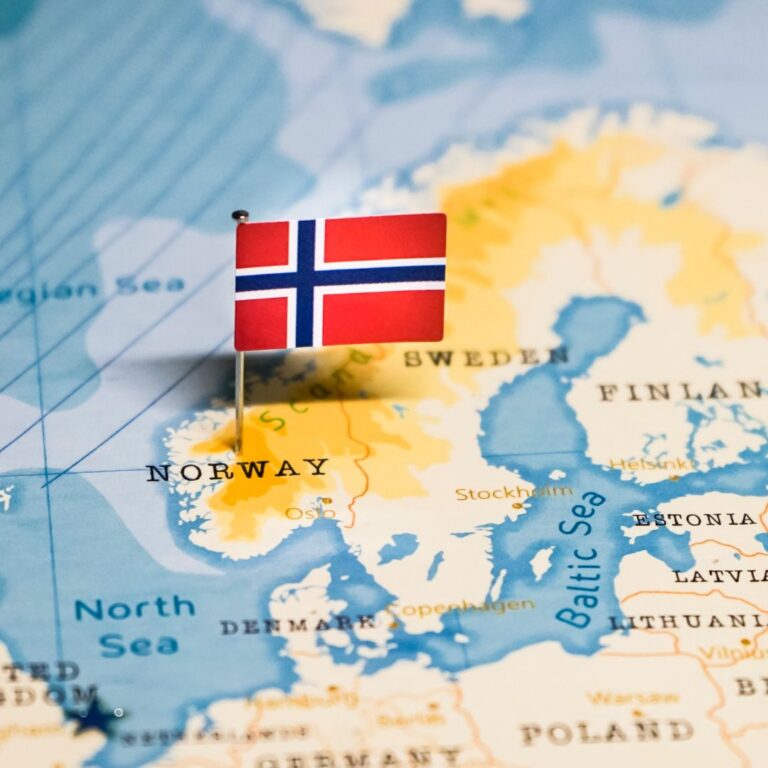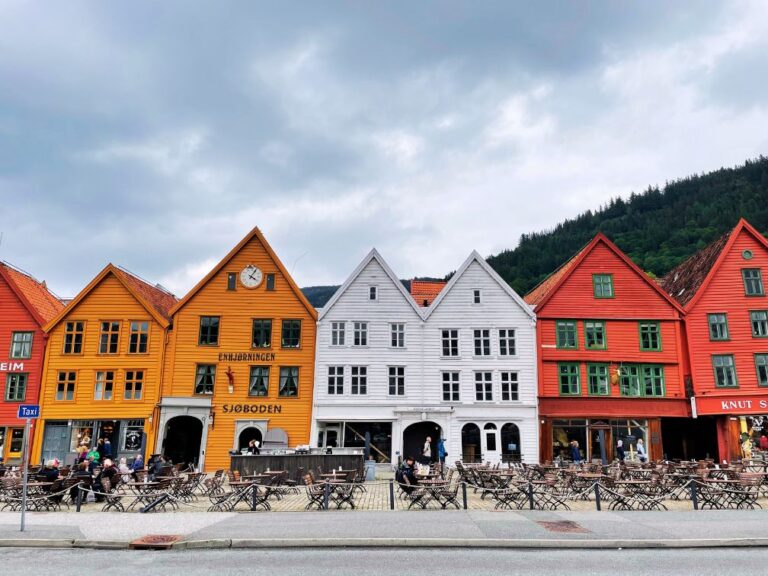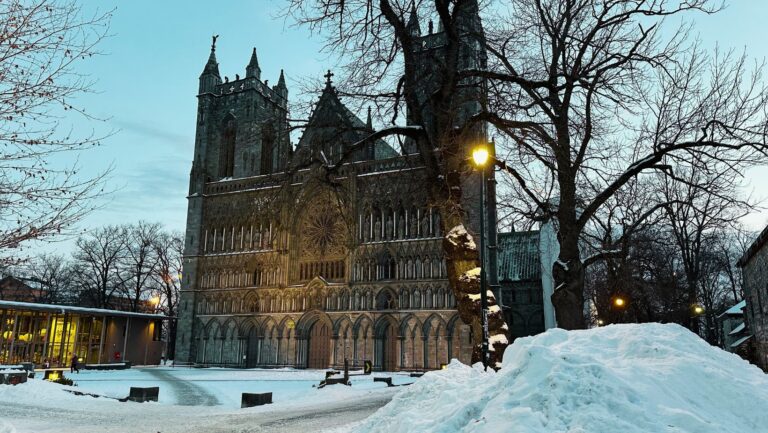One of the stumbling blocks when learning Norwegian is the variety of regional dialects in Norway. Here's what you need to know, for when you need to know it.
Learning Norwegian is an important step to integration when moving here. But learning any language is a long-term commitment and a real challenge, no matter what your native language is or where you come from.

Many sources claim Norwegian is one of the easier languages for a native English speaker to learn, because of its small vocabulary and relatively simple sentence structures.
There's certainly validity in that argument, but what it doesn't take into account is the vast range of regional dialects in Norway. This makes oral comprehension in Norwegian more of a challenge than reading, writing, or even speaking.
There's also the two written variants of Norwegian–bokmål and nynorsk–to consider, but in this article we'll just deal with spoken dialects.
Shortly before moving from Oslo to Trondheim, the Norwegian speakers in my office all laughed together and started emailing me things like “æ e trønder æ!” which confused me greatly.
Learn Norwegian Now: Norwegian Class 101 / The Mystery of Nils
As it turned out, that was my introduction to Trøndersk, the regional dialect of Trøndelag (central Norway), and the beginning of my fascination with trying to distinguish the dialects of Norwegian.
Why are there so many regional dialects in Norway?
Before we get on to specifics, let's look at the reasons behind the dialects of Norwegian. Norway's geographical layout plays a pivotal role in the proliferation of its regional dialects.

Stretching over 1,770 kilometres from its southernmost point to the northern tip, Norway's elongated and slender shape, characterised by its rugged coastline peppered with fjords, creates distinct regional separations.
These vast distances mean that historically, communities were isolated from each other, with travel between them being arduous and time-consuming.
In the absence of today's modern transportation methods, these communities evolved over centuries with minimal influence from their neighbours, nurturing unique dialects within each region.
Norway's political history also significantly influenced its linguistic landscape. For hundreds of years, Norway was under Danish rule, during which Danish was the official language of administration and higher education.
This period left a lasting impact on the Norwegian language, particularly in urban centers and the elite's communication, further diversifying the linguistic variation of the nation.
These factors combined—the country's challenging geography and its complex historical ties with Denmark—have fostered a rich diversity of dialects in Norway.
Regional dialects in Norway
As I've said, there's a huge variety of Norwegian dialects to be found across the country. It's impossible to put an exact figure on it, as language develops over time.

In some regions, the dialect is fairly consistent across a large area, while in others, it can vary significantly from town to town.
What linguists do agree on, however, is that there are four high-level groupings of Norwegian dialects: Eastern, Western, Central, and Northern. Some would argue that Midland and Southern are also distinct dialects, but let's stick to the main four.
Eastern Norwegian (Østnorsk)
The dialect of Oslo and the Eastern region of Norway, Østnorsk offers a crisp and clear speech pattern, making it the go-to for learners of Norwegian.
It's also the most commonly heard dialect in media–although regional dialects are heard far more on TV here than in other countries.
With its open vowels and precise pronunciation, Østnorsk is accessible and straightforward. Notably, it maintains the “hv-” sounds distinctively (e.g. hvor, hvordan) and tends to pronounce the final -r and -t in verbs, setting it apart from other dialects.
Western Norwegian (Vestlandsk)
‘Vestlandsk' is the voice of the west, where the language mirrors the robust, rugged landscapes. Known for its strong speech pattern, this dialect is characterized by hard consonants, including the distinctive “skarre-r” that resonates with the French r.
It's a dialect with a bit of roughness, giving it a unique edge. Words like “vattn” for water and “håve” for head are just glimpses into its unique vocabulary.
In areas like Stavanger, infinitive verbs often end with an -a, and there's a tendency to soften “k” sounds to “g” in the middle of words, adding a local flavour to the speech.
Central Norwegian (Trøndersk)
The Trøndersk dialect of Central Norway brings a musicality to Norwegian, with a rhythmic flow that's unmistakable. This dialect has a melodic quality, with guttural sounds adding to its distinctiveness.

By the way, the word ‘trøndersk' is an adjective describing a Trønder (a person from the county of Trøndelag) or anything coming from or relating to Trøndelag.
The Trøndersk dialect features some interesting linguistic twists, such as replacing “hv-” with “k-” or “kv-” and a phenomenon known as “levelling,” where vowels in the middle and end of words harmonize.
Additionally, the palatalisation of “n” and “l” (especially in the northern part of the region) adds a unique texture to words, making Trøndersk a dialect that sings.
Differences in personal pronouns are prevalent across Norwegian dialects, but there is particularly high variability in Trøndersk.
For example, in the Trondheim sub-dialect, the first person singular nominative is pronounced /æː/ and spelled “æ,” contrasting with the standard “jeg” (Bokmål) or “eg” (Nynorsk), while the second person plural accusative is pronounced “dokker” diverging from the standard “dere” (Bokmål) or “dykk” (Nynorsk).
Northern Norwegian (Nordnorsk)
The dialect of the north, Nordnorsk, is slow and deliberate, with a pronounced emphasis on each sound. I say dialect, but nordnorsk, perhaps more than any other, is a dialect group with significant variation across the vast northern region.
Nevertheless, there are some common traits. Nordnorsk dialects feature distinctive linguistic traits, such as lowering front vowels and replacing “hv-” with “k-,” contributing to a dialect that is both vibrant and expressive.
Nordnorsk is known for its rich and colorful vocabulary, with many words and phrases not found in other parts of the country. These vary from town to town. That also includes some inventive curse words.
Dialects when learning Norwegian
Don't worry too much about dialects in the early stages of your language learning journey. All that's needed is to know that they exist!
Learn Norwegian Now: Norwegian Class 101 / The Mystery of Nils
If you are learning the language in a place outside of Oslo, it's worth checking with your tutors what their local dialect is.
If you're learning in somewhere with a strong, distinct dialect like Bergen or Trondheim, ask to hear sentences and phrases in the local dialect as you learn them. You don't have to speak that way, but you'll quickly be able to recognise the dialect when being spoken to on the street.

